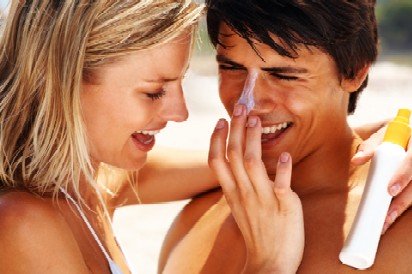Best Sun Protection Cream
Sun Protection is a fact of life™
The Best Sun Protection Cream:
A Comprehensive Guide
Sun exposure is one of the main causes of skin aging, wrinkles, and skin cancer. It is essential to protect your skin from the harmful effects of ultraviolet (UV) rays, which can penetrate the skin and damage its cells.
However, not all sun protection creams are created equal. Some may offer inadequate protection, while others may contain ingredients that can irritate or harm your skin.
In this article, we will provide you with a comprehensive guide on how to choose the best sun protection cream for your skin type, lifestyle, and preferences.
What is SPF and how does it work?
SPF stands for sun protection factor, and it indicates how well a sun protection cream can protect your skin from UVB rays, which are responsible for sunburns and skin cancer.
SPF is measured by comparing the amount of time it takes for unprotected skin to burn with the amount of time it takes for protected skin to burn.
For example, if your unprotected skin burns in 10 minutes, and your protected skin burns in 150 minutes, then your sun protection cream has an SPF of 15 (150/10 = 15).

However, SPF does not measure the protection against UVA rays, which are also harmful and can cause premature aging, wrinkles, and pigmentation.
UVA rays can penetrate deeper into the skin and damage its collagen and elastin fibers, which provide structure and elasticity to the skin.
Therefore, it is important to look for a sun protection cream that offers broad-spectrum protection, which means that it can block both UVA and UVB rays.

How to choose the right SPF level?
The right SPF level for you depends on several factors, such as your skin type, the intensity of the sun, the duration of your sun exposure, and your personal preference.
Generally speaking, the lighter your skin tone, the higher SPF you need, as lighter skin burns more easily than darker skin. However, this does not mean that darker skin does not need sun protection, as it can still suffer from sun damage and skin cancer.
The intensity of the sun varies depending on the time of day, the season, the latitude, and the altitude. The sun is strongest between 10 a.m. and 4 p.m., during summer months, closer to the equator, and at higher altitudes. Therefore, you may need a higher SPF when you are exposed to these conditions.
The duration of your sun exposure also affects the SPF level you need. If you are going to spend a long time outdoors, especially during peak hours or in sunny climates, you may need a higher SPF than if you are going to spend a short time indoors or in shady areas.
Finally, your personal preference also matters when choosing an SPF level. Some people may prefer a higher SPF for extra peace of mind, while others may prefer a lower SPF for aesthetic reasons or to avoid potential side effects of some sun protection ingredients.
To choose the best sun protection cream for your face and body, you need to consider your skin type, preferences, and needs. You also need to apply enough sunscreen (about a shot glass for your body and a nickel-sized amount for your face) and reapply it every two hours or after sweating, swimming, or toweling off.
Sunscreen is not enough to protect your skin from the sun; you also need to seek shade, wear protective clothing, hats, and sunglasses, and avoid peak sun hours. By following these tips, you can enjoy the sun safely and keep your skin healthy and beautiful all year round.

Conclusion
As a general rule of thumb, dermatologists recommend using at least an SPF of 15 for daily use and an SPF of 30 or higher for prolonged or intense sun exposure.
However, you should always consult with your doctor or pharmacist before choosing a sun protection cream, as they can advise you on the best option for your specific needs and conditions.
Join in and share your experience or story. How?
Simply click here to go to Sun Protection Reviews.
Return to Home Page Return to the Top








New! Comments
Have your say about what you just read! Leave me a comment in the box below.